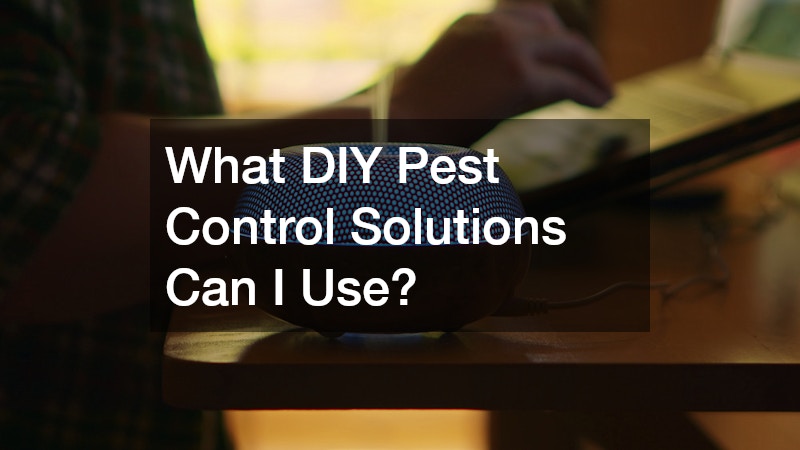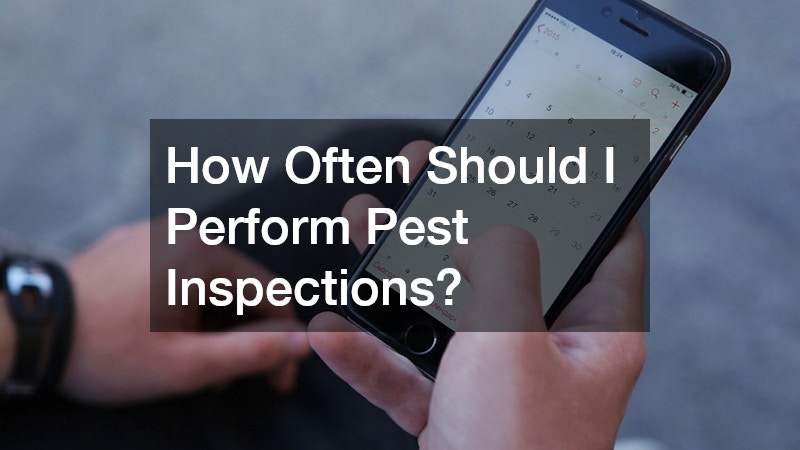Homes with aging plumbing and windows often present unique challenges when it comes to pest control. Water leaks, damp areas, and small gaps around fixtures or window frames create an inviting environment for insects and rodents. The combination of moisture, warmth, and easy access points can make older homes more susceptible to infestations than modern constructions. Recognizing the vulnerabilities of such homes is the first step in developing effective pest strategies.
The need for best pest solutions becomes particularly apparent in these settings. Homeowners may notice recurring issues with cockroaches, ants, termites, or even bed bugs, all of which exploit weaknesses in plumbing and window structures. Beyond the direct nuisance, pests can cause property damage, spread disease, and exacerbate existing maintenance problems. Proactive approaches, such as using a bed bug exterminator, natural termite control methods, or engaging professional exterminators, are crucial for maintaining a healthy living environment.
What Are the Common Pests Found in Homes With Aging Plumbing?

Homes with older plumbing systems often experience persistent pest issues. Certain insects and rodents are particularly attracted to moisture-rich environments, making leaky pipes, clogged drains, and damp basements prime locations for infestations. Utilizing best pest solutions means recognizing which pests are most likely to appear and how they exploit these vulnerabilities.
Cockroaches and Their Tendencies
Cockroaches are notorious for their adaptability. They thrive in environments with abundant moisture, such as under sinks, behind toilets, or around faulty plumbing connections. These pests are not only unpleasant to encounter, but they also carry bacteria that can compromise indoor air quality and food safety. Professional exterminators or targeted chemical treatments, combined with good hygiene and drain cleaning, form an effective approach to controlling cockroach populations. Even a cleaning company performing routine maintenance can help limit the conditions that attract these resilient insects.
Ants and Their Colonies Around Plumbing
Ants, particularly species like odorous house ants or carpenter ants, are commonly drawn to homes with aging plumbing. Leaky pipes provide a constant water source, while cracks and gaps serve as entry points into kitchens and bathrooms. The presence of ants often indicates a nearby nest, and addressing the moisture issue is critical. Utilizing baiting strategies or natural termite control products in certain cases can reduce infestation risk. These measures, coupled with inspecting siding, windows, and doors, enhance the overall effectiveness of best pest solutions.
Termites and Their Affinity for Moisture
Termites represent a more severe threat to homes with aging plumbing, especially if leaks go unnoticed for extended periods. Moist wood, often hidden behind walls or under floors, is particularly vulnerable. Natural termite control, including beneficial nematodes or borate treatments, can help mitigate infestations without relying solely on chemicals. Partnering with an experienced exterminator ensures thorough evaluation and targeted treatment. Additionally, structural improvements such as window replacement or siding repairs can reduce termite access points, making best pest solutions more comprehensive and long-lasting.
How Does Aging Plumbing Attract Pests?
Understanding why pests are drawn to old plumbing is essential in developing effective preventative measures. Moisture, warmth, and structural weaknesses create ideal breeding grounds for a variety of insects and rodents.
Understanding Leaks and Water Sources
Leaky pipes, dripping faucets, and malfunctioning water heaters contribute to consistent water sources. Many pests, including cockroaches and ants, rely on these sources for survival. Regular drain cleaning not only improves plumbing function but also removes the standing water that encourages infestations. Professional cleaning companies can identify areas of concern during routine maintenance, providing a proactive layer of best pest solutions.
Cracks and Crevices as Entry Points
Small gaps around pipes, drains, and fixtures act as natural entry points for pests. Even minor cracks allow ants, cockroaches, and other insects to access food and water sources easily. Sealing these openings, inspecting window frames, and engaging siding contractors for any exterior gaps are essential steps. Regular maintenance performed by a cleaning company, combined with a strategic pest control schedule, ensures that entry points remain limited and best pest solutions are consistently applied.
What Pest Control Methods Are Most Effective for Old Plumbing?
Homes with aging plumbing often require a mix of approaches to manage pests effectively. Understanding the benefits and limitations of each method is key to implementing best pest solutions.
Chemical Solutions vs. Natural Remedies
Chemical insecticides can offer rapid results, particularly for infestations of ants, cockroaches, or bed bugs. However, natural termite control and homemade repellents provide safer alternatives for homeowners concerned about environmental impact or chemical exposure. Utilizing a combination of treatments, under guidance from professional exterminators, allows for comprehensive coverage and long-term pest management.
Regular Maintenance and Inspections
Routine plumbing inspections, performed by homeowners or plumbing contractors, help identify leaks or potential pest entry points before they become problematic. Pairing these inspections with services such as window replacement, siding contractors, and even a chimney sweep ensures a holistic approach. By addressing vulnerabilities consistently, homeowners can maintain a pest-free environment and uphold the principles of best pest solutions.
How Can Aging Windows Contribute to Pest Issues?

Older windows often create ideal entry points for pests. Even small gaps, broken seals, or worn-out screens provide opportunities for insects and rodents to infiltrate a home. Understanding these vulnerabilities is crucial to implementing best pest solutions that prevent recurring infestations.
Identifying Gaps and Leaks Around Windows
Cracks and gaps around window frames are prime entry points for ants, cockroaches, and other pests. Water can seep through these openings, creating damp areas that attract termites and bed bugs. A combination of visual inspection and professional evaluation helps identify these weak points, allowing homeowners to apply natural termite control or consult exterminators when needed. Regular maintenance, paired with cleaning company services, ensures that potential infestations are caught early.
The Impact of Broken Seals and Screens
Damaged window seals and torn screens not only reduce energy efficiency but also compromise pest protection. Pests such as mosquitoes, flies, and small rodents can exploit these weaknesses. Addressing these issues through window replacement or repairing screens contributes to best pest solutions by removing easy access routes and reinforcing the overall integrity of the home.
Seasonal Vulnerabilities From Open Windows
Open windows during warm months allow pests to enter freely, especially in older homes with gaps or misaligned frames. Bed bug infestations and ant colonies can expand rapidly if seasonal precautions aren’t taken. Installing storm windows, maintaining screens, and consulting a cleaning company for thorough seasonal cleaning help mitigate these risks and complement other pest control strategies.
What Preventative Measures Can Be Taken With Old Windows?
Preventing pest issues before they start is always more effective than reactive treatments. Several measures focus on reinforcing old windows while integrating best pest solutions throughout the home.
Installing Storm Windows for Better Fortification
Storm windows provide an additional layer of protection against the elements and pests. They help seal gaps that might otherwise allow entry to ants, termites, or cockroaches. Pairing storm window installation with regular inspections and natural termite control measures enhances overall pest management.
Weather Stripping and Caulking Techniques
Weather stripping and caulking are cost-effective ways to seal gaps around window frames. These measures limit water intrusion and reduce the risk of pest entry. Combining these techniques with routine drain cleaning and consultation with siding contractors creates a comprehensive approach to best pest solutions.
When Should I Call a Pest Control Professional?
Some pest problems require the expertise of trained exterminators to ensure long-term solutions. Knowing when to reach out is key to maintaining a pest-free home.
Signs of an Infestation
Visible pests, droppings, damage to wood or insulation, and persistent odors indicate the presence of infestations. Engaging a bed bug exterminator or professional exterminator early can prevent widespread damage. Implementing best pest solutions at the first sign of trouble maximizes effectiveness.
Assessing the Scale of the Problem
Determining whether an infestation is localized or widespread guides treatment decisions. Minor issues may be addressed with DIY strategies, but larger problems benefit from a professional’s experience. Regular drain cleaning, inspections, and maintenance performed by cleaning companies can also help gauge the scale of potential pest issues.
The Benefits of Professional Intervention
Exterminators bring specialized knowledge and tools, including chemical treatments and natural termite control options, that homeowners may not be able to implement safely themselves. Professional interventions provide long-term protection, complementing other home improvements such as window replacement, siding repairs, and chimney sweeps. These strategies collectively reinforce best pest solutions.
What DIY Pest Control Solutions Can I Use?

Homeowners can take several proactive steps to manage pests without relying solely on professional services. Combining DIY methods with occasional expert support creates a balanced approach.
Homemade Traps and Repellents
Simple traps for ants, cockroaches, and even bed bugs can reduce populations effectively. Using natural ingredients or commercially available DIY kits allows homeowners to implement best pest solutions safely. Placement near plumbing areas, windows, or garages increases effectiveness, particularly when combined with routine cleaning by a cleaning company.
Essential Oils and Their Pest-Repelling Properties
Essential oils, such as peppermint, tea tree, and eucalyptus, serve as natural repellents for many household pests. Spraying around cracks, window frames, or under sinks complements other preventive measures like drain cleaning or sealing gaps. Integrating these oils into a consistent home maintenance routine enhances the overall effectiveness of best pest solutions.
Cleaning and Maintenance Tips
Routine cleaning and maintenance are vital. Regularly vacuuming, sanitizing surfaces, and decluttering reduce food sources and hiding places for pests. Services like drain cleaning, window replacement, or siding contractor inspections also support these efforts, ensuring a cohesive, pest-resistant environment.
How Can I Enhance the Overall Health of My Home to Deter Pests?
A holistic approach to home health strengthens pest prevention, particularly in older homes with aging infrastructure.
Importance of Proper Drainage Systems
Effective drainage reduces standing water that attracts pests. Drain cleaning and gutter maintenance are essential components of best pest solutions. Properly directing water away from the home’s foundation limits conditions that encourage termites, ants, or cockroaches to thrive.
Regularly Cleaning Gutters
Clogged gutters can trap water and debris, creating ideal breeding grounds for mosquitoes, ants, and even rodents. Overflowing water from neglected gutters can seep into your home’s foundation, walls, or attic, attracting pests that thrive in damp conditions. Scheduling regular gutter cleaning is an essential preventative measure for homeowners seeking best pest solutions. This can be done seasonally or more frequently in areas with heavy rainfall. Pairing gutter maintenance with siding contractors’ inspections ensures that water is directed away from the house properly, reducing moisture-related pest risks. Additionally, a chimney sweep can identify potential water infiltration points near the roofline, further enhancing your home’s defense against pests.
What Role Does Food Storage Play in Pest Control?
Food handling and storage are often overlooked in pest management, yet they are essential for comprehensive best pest solutions.
Proper Food Sealing and Storage Methods
Pests such as ants, cockroaches, and even rodents are highly motivated by accessible food. Using airtight containers, properly sealing pantry items, and regularly rotating food supplies reduce attraction points for infestations. Even minor improvements, like storing pet food in sealed containers, can make a significant difference. Integrating these practices with services like bed bug exterminator interventions or general exterminator oversight ensures a multi-layered approach to home protection.
Garbage Management Practices
Garbage bins, particularly those kept indoors or near entrances, can quickly attract pests. Ensure bins are tightly closed, regularly cleaned, and emptied to prevent odor-based attraction. Implementing proper waste management practices complements structural solutions like window replacement or siding contractor repairs by reducing entry incentives for pests. Regular cleaning company visits also support sanitation, reinforcing your overall best pest solutions strategy.
How Often Should I Perform Pest Inspections?

Regular inspections are essential for early detection and prevention, particularly in homes with aging plumbing and windows.
Creating a Pest Control Schedule
Establishing a consistent schedule for inspections is a key element of best pest solutions. Depending on your region and the types of pests common to your area, homeowners should consider quarterly or biannual assessments. Professional exterminators can complement DIY inspections by identifying subtle signs of infestation that may go unnoticed, while homeowners can monitor visible problem areas around drains, window frames, and structural gaps.
Seasonal Considerations for Inspections
Certain pests are more active during specific seasons. Ants and cockroaches may be more prevalent during warm months, while rodents often seek shelter indoors during colder weather. Aligning inspections with seasonal cycles allows for targeted interventions, combining natural termite control, drain cleaning, and general housekeeping practices. This proactive approach ensures that best pest solutions are continuously effective.
Managing pests in homes with aging plumbing and windows requires a comprehensive, multi-layered approach. Understanding the unique vulnerabilities of older homes, from leaky pipes and high humidity to gaps around window frames and clogged gutters, allows homeowners to implement preventative measures effectively. Utilizing a combination of professional services, such as a bed bug exterminator, general exterminators, drain cleaning, window replacement, siding contractors, chimney sweep, or garage repair service, strengthens home defenses and ensures long-term protection.
